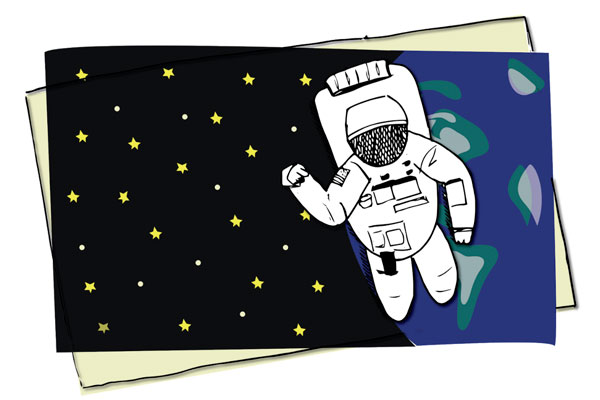Download the Whitepaper
As we begin, I’d like you to take a moment to consider something very specific: the life and times of an astronaut. What is it like to be a person who willingly subjects themselves to the intensity and intrigue of outer space? How does a man or woman, carrying with them all the strengths and limitations of the human body and mind, survive for weeks on end without the creature comforts and sure footing of life on earth?

Among the many specialists who make careers out of pondering the needs and desires of galactic travelers, is a scrappy bunch typically referred to as human factors engineers. These folks spend their time assessing whether tools, technologies, and processes are appropriate in combination and in context, i.e. while at zero gravity, can a person reasonably use these three tools to perform this four-step task?
The human factors umbrella covers a broad class of people, like astronauts, who work in high stakes environments where making mistakes on the job is highly undesirable. Such individuals include medical practitioners, the military, factory workers, pilots, TSA operatives, and many others.
The process followed by human factors engineers for designing tools and systems for people like this — those whose jobs require their mental and physical effort be distributed across dynamic and demanding environments — is much the same as any process followed by those who design, say, software for lay people: extensive research to turn up insights and opportunities, followed by iterative prototyping, and assessment of usability in context. Lather, rinse, repeat.
Yet, despite shared processes and a shared history, it’s unusual to hear human factors and design discussed in the same context.
At Civis, I design products for data scientists — a complicated breed of thinker with a proclivity for developing particularly tricky mental models. To unravel the cognitive yarn spun up by their varying and complex workflows (“Yes, I must have all 17 tabs open”), I’ve had to reunite myself with the user experience field’s rich background, which includes human factors, but also psychology, computer science, and engineering.
In other words, I try my best to think like those who think about astronauts.
And this may seem peculiar. Data scientists are not, after all, faced with the prospect of defying gravity. Neither are they running into burning buildings, attempting to spot trouble amidst a sea of faces, operating heavy machinery in mid-air, performing brain surgery on a preemie, or planning tactical missions in a war zone. They are, however, distributing their cognitive effort across a dynamic and demanding environment. It just so happens that their environment consists not of objects in physical space, but of a landscape of software tools, programming languages, workflows, and the like — all of which they use to explore the abstract universe. Models and galaxies. Columns, rows, and planets. Data points and stars. To me, the data scientist is the astronaut of the Earth.
All of this astronomical thinking is really just a way to avoid the analytical paralysis that results from internalizing the oft-preached phrase in UX literature: You are not your user. While on its face, a friendly reminder to young designers to avoid the False-Consensus Effect, beneath the expression’s surface lurks a paradox that can sometimes make my attempt to understand the needs of my users from an unbiased distance feel like an exercise in self-denial.
My response is to expand the phrase into a mantra that pays deference to the multidisciplinary history of design while recognizing that, in practice, making things that work for any kind of person, be they an astronaut or an Instagram influencer, is still more of an art than a science. Measurement is possible, but usually subjective. Collected data tends to be more qualitative than quantitative. Biases abound and must be checked.
My mantra goes like this:
My user is a human very different than me:
A body and brain with limits,
A person with a perspective,
and a singular character with particularities
This series will explore this mantra in more depth, expounding on what it means to design with a user’s limits, perspective, and particularities in mind.

